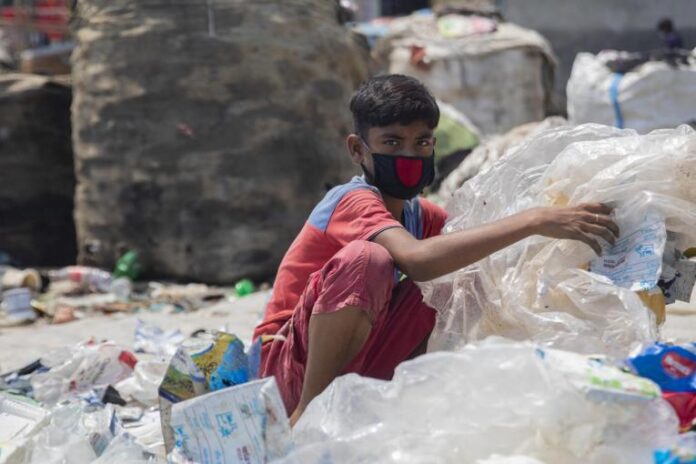The United Nations said Thursday that child labor has increased worldwide for the first time in 20 years. They warned that the coronavirus crisis could be forced million more children into child labor in the next two years.
In a joint report, the International Labor Organization (ILO) and UNICEF of the United Nations Children’s Fund said an estimated 160 million children were involved in child labor around the world at the beginning of 2020, an increase of 8.4 million in four years.
According to the report, the latest global estimates indicate that 160 million children – 63 million girls and 97 million boys – were in child labour globally at the beginning of 2020, accounting for almost 1 in 10 of all children worldwide. Seventy-nine million children – nearly half of all those in child labour – were in hazardous work that directly endangers their health, safety and moral development.
Global progress against child labour has stagnated since 2016. The percentage of children in child labour remained unchanged over the fouryear period while the absolute number of children in child labour increased by over 8 million. Similarly, the percentage of children in hazardous work was almost unchanged but rose in absolute terms by 6.5 million children.
The global picture masks continued progress against child labour in Asia and the Pacific, and Latin America and the Caribbean. In both regions, child labour trended downward over the last four years in percentage and absolute terms. Similar progress in sub-Saharan Africa has proven elusive. This region has seen an increase in both the number and percentage of children in child labour since 2012. There are now more children in child labour in sub-Saharan Africa than in the rest of the world combined. Global child labour goals will not be achieved without a breakthrough in this region.
The COVID-19 crisis threatens to further erode global progress against child labour unless urgent mitigation measures are taken. New analysis suggests a further 8.9 million children will be in child labour by the end of 2022 as a result of rising poverty driven by the pandemic.
Yet the predicted additional rise in child labour is by no means a foregone conclusion. The actual impact will depend on policy responses. Two additional scenarios demonstrate the huge influence of social protection coverage on child labour in the near term. Where social protection coverage is allowed to slip, a significant further increase in child labour 8 could occur by the end of 2022. A rise in social protection coverage, on the other hand, could more than offset the impact of COVID-19 on child labour, returning us to progress on the issue.
Other key results from the 2020 global estimates include:
• Involvement in child labour is higher for boys than girls at all ages. Among all boys, 11.2 per cent are in child labour compared to 7.8 per cent of all girls. In absolute numbers, boys in child labour outnumber girls by 34 million. When the definition of child labour expands to include household chores for 21 hours or more each week, the gender gap in prevalence among boys and girls aged 5 to 14 is reduced by almost half.
• Child labour is much more common in rural areas. There are 122.7 million rural children in child labour compared to 37.3 million urban children. The prevalence of child labour in rural areas (13.9 per cent) is close to three times higher than in urban areas (4.7 per cent).
• Most child labour – for boys and girls alike – continues to occur in agriculture. Seventy per cent of all children in child labour, 112 million children in total, are in agriculture. Many are younger children, underscoring agriculture as an entry point to child labour. Over three quarters of all children aged 5 to 11 in child labour work in agriculture.
• The largest share of child labour takes place within families. Seventy-two per cent of all child labour and 83 per cent of child labour among children aged 5 to 11 occurs within families, primarily on family farms or in family microenterprises. Family-based child labour is frequently hazardous despite common perceptions of the family as offering a safer work environment. More than one in four children aged 5 to 11 and nearly half of children aged 12 to 14 in family-based child labour are in work likely to harm their health, safety or morals.
• Child labour is frequently associated with children being out of school. A large share of younger children in child labour are excluded from school despite falling within the age range for compulsory education. More than a quarter of children aged 5 to 11 and over a third of children aged 12 to 14 who are in child labour are out of school. This severely constrains their prospects for decent work in youth and adulthood as well as their life potential overall. Many more children in child labour struggle to balance the demands of school and child labour at the same time, which compromises their education and their right to leisure.
They warned that nearly 50 million more children could be forced into child labor in the next two years unless urgent action is taken to help boost the number of families in poverty.
A global media for the latest news, entertainment, music fashion, and more.



